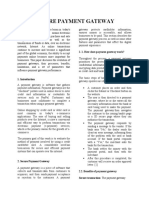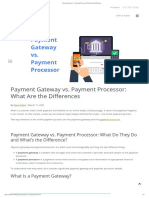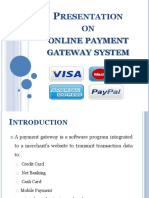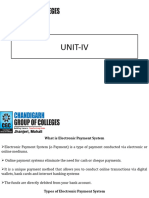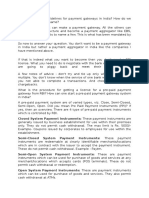0% found this document useful (0 votes)
10 views2 pagesPayment Gateway
A payment gateway is a service that authorizes, encrypts, and transmits payment data between customers and banks. It involves several steps including data encryption, authorization requests, and fraud screening, ensuring secure transactions for e-commerce, mobile apps, and POS systems. Popular examples include Stripe, PayPal, and Square, and they must comply with security standards like PCI DSS.
Uploaded by
Majid ShahidCopyright
© © All Rights Reserved
We take content rights seriously. If you suspect this is your content, claim it here.
Available Formats
Download as DOCX, PDF, TXT or read online on Scribd
0% found this document useful (0 votes)
10 views2 pagesPayment Gateway
A payment gateway is a service that authorizes, encrypts, and transmits payment data between customers and banks. It involves several steps including data encryption, authorization requests, and fraud screening, ensuring secure transactions for e-commerce, mobile apps, and POS systems. Popular examples include Stripe, PayPal, and Square, and they must comply with security standards like PCI DSS.
Uploaded by
Majid ShahidCopyright
© © All Rights Reserved
We take content rights seriously. If you suspect this is your content, claim it here.
Available Formats
Download as DOCX, PDF, TXT or read online on Scribd
/ 2















